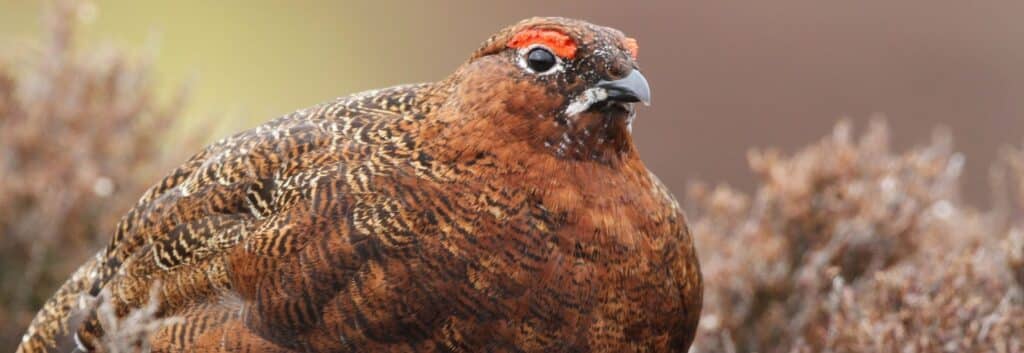Over the last two days we’ve laid out some of the less than ‘glorious’ facts about the grouse shooting industry.
In our first post, ‘There’s nothing ‘glorious’ about killing grouse‘, we outlined how the 12th of August (the ‘Inglorious 12th’) marks the start of a key ‘season’ for the shooting industry, and that over the next 121 days that industry will aim to sell hundreds of thousands of Red Grouse to shooters to kill.
In our second post, ‘The REALITY behind the ‘Glorious 12th’ – traps, snares and wildlife crime‘, we explained that the industry is not just responsible for the slaughter of hundreds of thousands of Red Grouse (from 300,000 – 500,000 depending on conditions on the moors the previous Spring), but also untold numbers of wild animals killed in snares and traps, and that the whole disgusting industry is underpinned by wildlife crime – in particular raptor persecution (the illegal persecution of birds of prey).
What’s the solution to all this spilt blood and broken bones? No matter how hard it might seem to do, we think it’s shutting the industry down entirely. In this third and final post of our short series we look at how that might be achieved, and why offering a ‘licencing lifeline’ to the industry is not the answer.
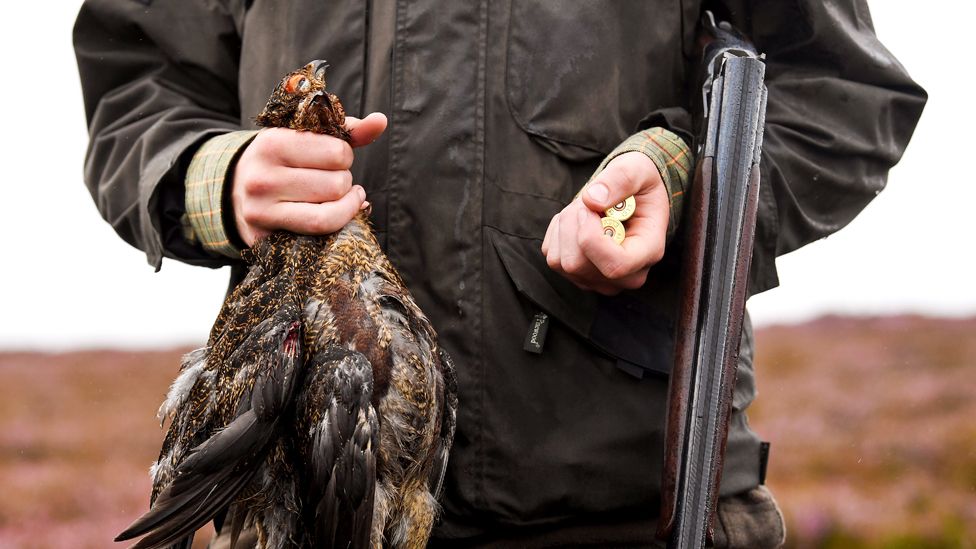
Can an industry like this actually be shut down?
Grouse shooting is abhorrent and out of step with modern thinking. It should never have been allowed to develop into the intensively-managed industry that it has become. Incredibly, Rewilding Britain found that 44% of the Cairngorms national park, 28% of the North York Moors and a fifth of the Peak District, are grouse moors – this is NOT what the vast majority of people expect our most important landscapes to be used for.
Despite being run by some of the wealthiest people in Britain, the grouse shooting industry is already struggling though. Killing Red Grouse is very much a minority and waning interest. We all know that habitat destruction – especially of important upland peatlands – must stop, and legislation on burning the moors is becoming ever more restrictive. Conditions in the uplands are also changing with the climate crisis making rearing birds to kill more difficult.
- In its ‘Time for Change Report’ which looked at the uplands, the RSPB said that “By 2080, average temperatures may rise by at least 20C and rainfall may increase by 10-15% in winter and decrease by up to 30% in summer…greater care will be required when using fire as a management tool… Red Grouse may retreat uphill and to the north of the UK“. Impacts will undoubtedly be felt far sooner.
- In 2021 the grouse shooting ‘season’ was almost abandoned with the pro-shooting GWCT saying that, “A combination of dead, dying and poor-quality .heather following [heather] beetle attacks, winter browning and recent frosts, together with fewer cotton grass protein-boosts and rising numbers of parasites {especially nematode worms], despite medicated grit, are likely to make this another difficult grouse year across many moors in northern England“. They were right.
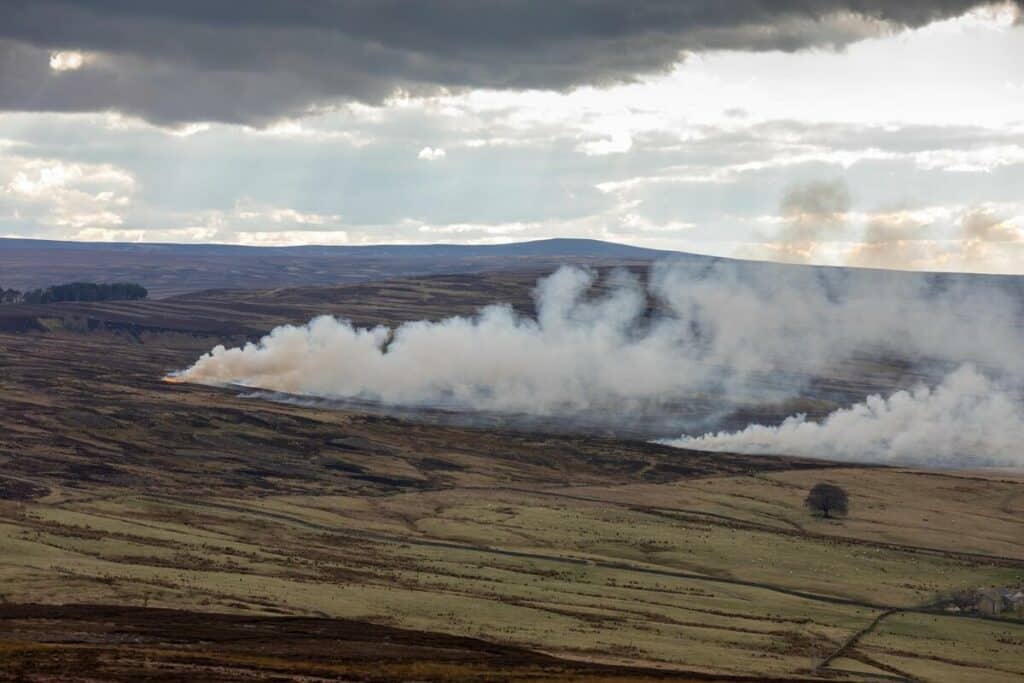
- The UK uplands store around 5 billion tonnes of carbon. Scotland alone holds 2.7 billion tonnes in peat and other soils, with 1 billion stored in blanket bog. These areas should not be burnt just to raise birds to be shot.
- The EMBER (Effects of Moorland Burning on the Ecohydrology of River basins) project showed that heather burning on moorland has significant negative impacts on peat hydrology, peat chemistry and physical properties, river water chemistry and river ecology.
- In April 2023 the IUCN’s Position Statement: Burning and Peatlands V.4 stated that “The overwhelming scientific evidence base points to burning on peatlands causing damage to key peatland species, peatland ecosystem health, and the sustainability of peatland soils.”
- Governments now recognise that fact. The Heather & Grass Burning Regulations (England) came into force on 1st May 2021. As of 2023 the Scottish Parliament is scrutinising the Wildlife Management and Muirburn (Scotland) Bill which will set “rules around the making of muirburn (the controlled burning of heather and other plants for land management purposes)”. Standard grouse moor management practices will be increasingly outlawed.
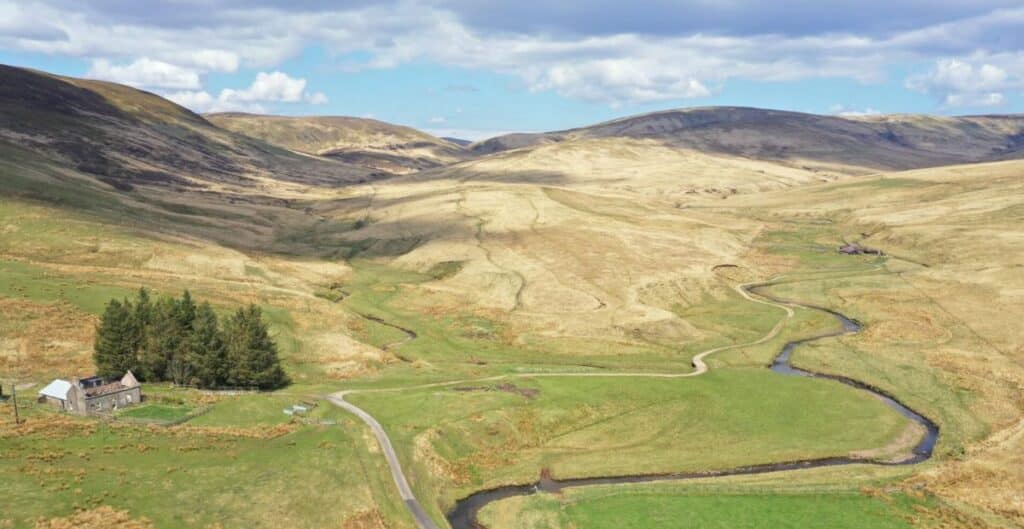
The Tarras Valley
- There are better ways to manage the land. Local community groups like the Langholm Initiative are investing in buying up grouse moors to create nature reserves – and making a success of it.
- Employment opportunities are changing. The old-fashioned raptor-hating keeper needs to be pensioned off but there are expert wildlife trackers and potential wildlife guides in their number. Even an article in The Times slating Brewdog for buying a moor and laying off six gamekeepers acknowledged that jobs will be created, writing that the craft beer company “is also planning to create an environmentally sustainable hotel, distillery and campsite along with hiking and biking trails”.
- Major landowners like the National Trust, Yorkshire Water, and United Utilities (the latter the largest corporate landowner in England) are pulling out of the grouse killing business. More will follow.
- Natural England has named peatlands as one of the most important habitats for carbon storage. It is becoming obvious to moor owners (and potential moorland purchasers) that using the land for carbon storage and carbon credits is a better long-term investment than using it to ‘farm’ birds for the gun.
Licencing? No thanks.
The grouse shooting industry is its own worst enemy. It is increasingly being seen for what it really is: a destructive industry that revolves around the killing of vast numbers of wild animals, is riddled with wildlife crime, and unapologetically turns vast areas of the uplands into monocultures where almost nothing but Red Grouse live out their short lives.
It is on the retreat.
Which makes it so difficult to understand why so many conservationists and commentators are pushing for it to be licenced rather than shut down, effectively offering the grouse shooting industry a ‘licencing lifeline’.
Licencing is being increasingly touted as a way of controlling the chaos and killing on grouse moors. It would, apparently, involve a shoot or an estate obtaining an operational licence from a regulator which would, at minimum, have conditions attached mandating the shoot follows wildlife and environmental protection codes of practice and laws. Where there is evidence suggesting that a shoot has failed to follow those conditions the licence can be withdrawn.
As we have stated before we are fundamentally opposed to a ‘licencing lifeline’ being offered to grouse moor owners.
- A licence will legitimise the grouse shooting industry and officially okays the slaughter of hundreds of thousands of Red Grouse every year. That is not acceptable to us.
- Licencing essentially says that the ‘legal’ killing of countless numbers of foxes, corvids, stoats/weasels, and other native animals in traps and snares to support the industry can continue as now. That is also unacceptable to us.
- We’re led to believe that licencing will somehow stop raptor persecution, but legislation already exists to protect birds of prey (and has done so for over half a century), yet they are being killed on grouse moors as a matter of routine: why should that change when estates shield criminals and it is so difficult to secure a conviction?
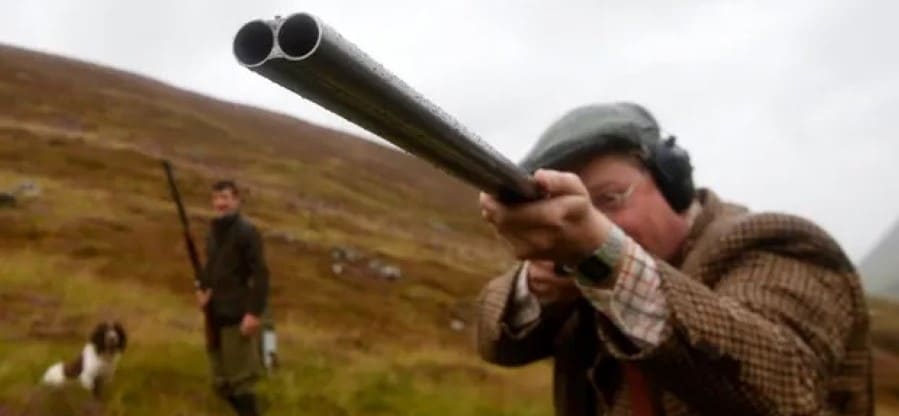
- Allegedly conditions of the licence will include mandating that shoots adhere to ‘environmental protection codes of practice and laws’ but there are no guarantees of increased resources to ensure enforcement of these ‘licencing’ conditions.
- The entire shooting industry is expert at appealing charges and dragging cases through the courts. Withdrawing an operating licence once it has been issued will be protracted and expensive if not almost impossible.
- And lastly conservationists are saying that having killed millions upon millions of grouse and other native animals, having committed wildlife crimes for decades, having trashed SSSis and burnt internationally-scarce habitats, estate owners shouldn’t be stopped but should be offered licences that not only permits all this slaughter and habitat destruction to continue but officially sanctions it! Do punishments come any gentler than that…
In our opinion, once the grouse shooting industry has the stamp of approval given to it by ‘a licence’ it will conclude ‘job done’ and getting rid of it will be made more difficult.
The industry will end one day though. The world will change around it making it hugely unpopular, unprofitable, and unsustainable. It will make too many mistakes, commit too many crimes, and lie too often. Its own arrogance will eventually eat it alive.

